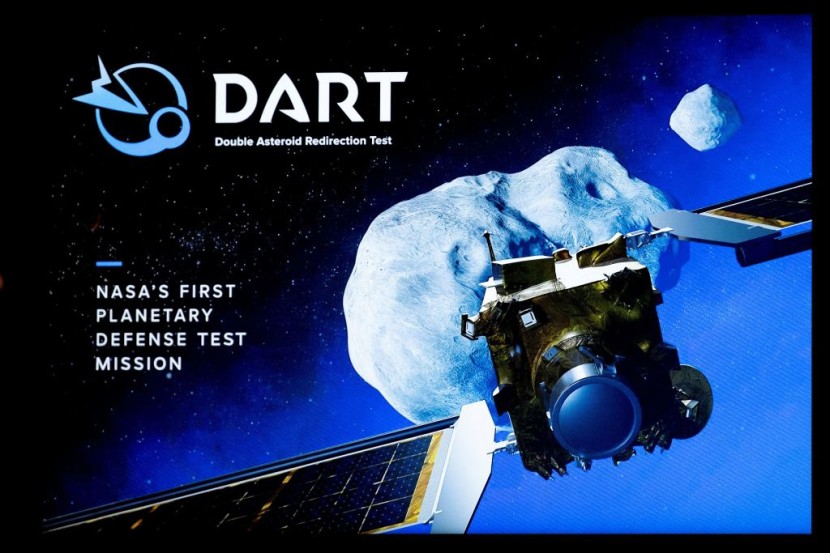
NASA's Double Asteroid Redirection Test (DART) mission, where a spacecraft is deliberately smashed into an asteroid in an attempt to change the latter's course, will strike the cosmic object on Monday.
The mission aims to see if this kind of kinetic impact is able to deflect an asteroid that would potentially pose a threat to our planet, and you can watch it on NASA's website.
NASA's DART Mission
NASA program scientist for the DART mission Tom Statler said, "We are moving an asteroid. We are changing the motion of a natural celestial body in space. Humanity has never done that before."
The DART spacecraft is roughly the same size as a school bus and has been traveling to reach its asteroid target since launching in November 2021. It will arrive at the asteroid system on September 26 and impact is expected to occur at roughly 7:14 p.m. ET.
The craft is heading towards a double-asteroid system, where a tiny "moon" asteroid, named Dimorphos, orbits a larger asteroid, known as Didymos. The latter's name means "twin" in Green and it is roughly 780 meters in diameter. On the other hand, Dimorphos is roughly 160 meters across and its name means "two forms," as per CNN.
At the time of the impact, Didymos and Dimorphos will be relatively close to Earth, somewhere within 11 million kilometers. Neither of the two asteroids is at risk of colliding with our planet, whether before or after the collision with the spacecraft.
The DART spacecraft is on a Kamikaze mission and after setting its sights on Dimorphos, will accelerate to 21,600 kilometers per hour and crash into the moon nearly head-on. The craft is roughly 100 times smaller than its target asteroid, so it would not obliterate the cosmic object.
According to SciTechDaily, Johns Hopkins Applied Physics Laboratory (APL) in Laurel, Maryland, designed and leads the ambitious mission for NASA. However, it still calls on the expertise of various NASA centers, similar to other missions.
Colliding With an Asteroid
In the case of the agency's Jet Propulsion Laboratory (JPL) in Pasadena, California, that expertise is for navigation, asteroid science, the precise location of the target, and Earth-to-spacecraft communications.
The director of JOL, Laurie Leshin, said that strategic partnerships between the JPL and APL are the lifeblood of cutting-edge space mission development. She added that their history of working with APL goes back all the way to Voyager and extends well into the future, with missions such as Europa Clipper.
The DART spacecraft uses JPL's navigation support to find its way to its target asteroid in the far reaches of the cosmos. JPL's Julie Bellerose, who leads the DART spacecraft navigation team, said that supporting the travel was a "difficult job."
Previously, the DART mission captured a photograph of Jupiter and its four largest moons, in a test of its autonomous navigation system. This will help lead the spacecraft to collide with its target asteroid.
NASA released the image on Sept. 20 but was actually taken over the summer, when DART was roughly 26 million kilometers from Earth. The operators of the mission used Jupiter and its four Galilean moons to validate how objects that are close together appear to the DRACO camera, which is DART's sole instrument, Space reported.
Related Article: MIT Warns Astronomers of Misinterpreting James Webb Space Data Due to Lack of Accurate Technology
© 2026 HNGN, All rights reserved. Do not reproduce without permission.








